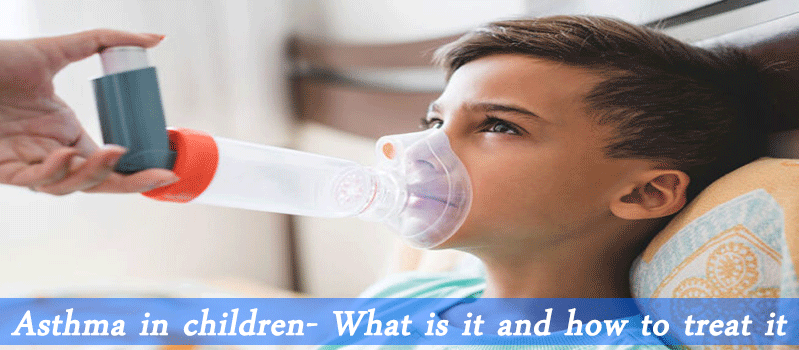Childhood asthma is the same lung illness that adults suffer, although children’s symptoms are often different. This is also known as pediatric asthma by doctors. When your child has asthma, their lungs and airways can easily get inflamed from a cold or exposure to pollen. Your child’s symptoms may make it difficult for him or her to complete normal activities or sleep. An asthma episode may necessitate a trip to the hospital.
The majority of children with asthma develop symptoms before the age of five. In newborns, toddlers, and preschoolers, the bronchial tubes- the passages that allow air to enter and leave the lungs- are short and narrow. Colds in the head and chest, as well as other ailments, can irritate these airways, making them even narrower. It can be difficult for parents and even doctors to tell when symptoms are caused by asthma in very young children.
What causes Asthma and it affects breathing?
Nobody really knows why some people get asthma. Experts believe it’s a combination of environmental and genetic variables. Asthmatics may have a parent or other close family who suffers from the disease. Overweight people are more likely to develop it.
Air does not pass through the lungs as it should in asthma. When someone breathes in normally, air enters through the nose or mouth, travels down the windpipe, and enters the lungs’ airways. Air escapes the body in the opposite direction as humans breathe out. When you have asthma, air has a tougher difficulty moving through your lungs. The mucus in the lungs expands and fills the airways. The muscles that surround the airways tighten, narrowing them. Triggers are substances that can irritate the airways. Cigarette smoke, allergies, and exercise are all common triggers. Asthma flare-ups or “attacks” can occur as a result of triggers.
Asthma symptoms in toddlers
- Toddlers
Because toddlers are not always able to verbalize when they are sick, it’s critical for parents to be aware of any new symptoms. Symptoms of asthma in toddlers may also include:
- Feeling troubled sleeping at night
- Difficulty in breathing during normal routine or playtime
- Unexplained caused of tiredness
- Older Children
Older children can quiet easily communicate with their parents for symptoms related to asthma. However, parents need to pay attention to the signs and symptoms explained by their kids:
- Lack of energy and feeling tired throughout the day
- Heaviness in chest or chest pain
- Consistent cough, however at night only
Treatments for Asthma in Children
- Techniques for avoiding triggers: If tobacco smoke triggers your child, for example, you should not allow anyone to smoke in your home or automobile.
- Medicines for short-term relief, commonly known as quick-relief medications: During an asthma attack, they can help prevent or reduce symptoms. They come with an inhaler that you should keep on hand at all times for your youngster. Other sorts of drugs that act swiftly to help open your child’s airways may also be included.
- Medicines that are under control: They act by decreasing inflammation in the airways and avoiding airway constriction. Control medications will not be taken by all children. Whether or whether your child requires them is determined by the severity of his or her asthma and how frequently he or she experiences symptoms.
Diagnosis
A chest X-ray may be required for your youngster. They may get a simple lung test called spirometry if they’re 6 or older. It determines how much air is in your child’s lungs and how quickly they can expel it. This assists the doctor in determining the severity of their asthma. Other testing can aid in the discovery of asthma triggers. Allergy skin testing, blood tests (IgE or RAST), and X-rays may be used to determine whether sinus infections or gastroesophageal reflux disease (GERD) are causing asthma to worsen. Inflamed airways can also be detected with a test that detects the amount of nitric oxide (eNO) in your child’s breath.




